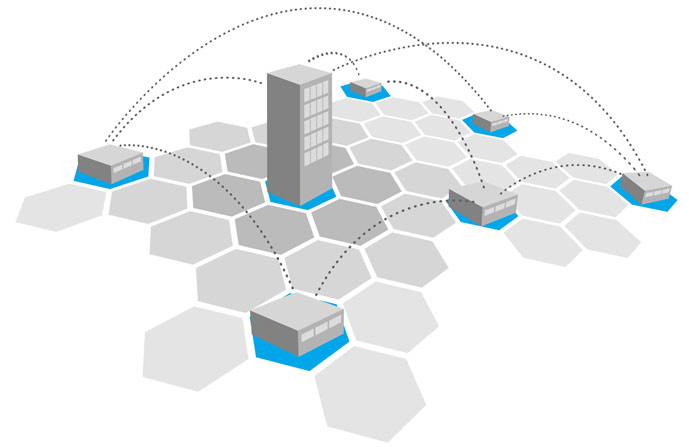Wide Area Network
Wide Area Network
A wide area network, or WAN, spans a large geographical area, often a country or continent. It contains a collection of machines intended for running user (i.e., application) programs. These machines are called as hosts. The hosts are connected by a communication subnet, or just subnet for short. The hosts are owned by the customers (e.g., people's personal computers), whereas the communication subnet is typically owned and operated by a telephone company or Internet service provider. The job of the subnet is to carry messages from host to host, just as the telephone system carries words from speaker to listener.
Separation of the pure communication aspects of the network (the subnet) from the application aspects (the hosts), greatly simplifies the complete network design. In most wide area networks, the subnet consists of two distinct components: transmission lines and switching elements. Transmission lines move bits between machines. They can be made of copper wire, optical fiber, or even radio links. In most WANs, the network contains numerous transmission lines, each one connecting a pair of routers. If two routers that do not share a transmission line wish to communicate, they must do this indirectly, via other routers. When a packet is sent from one router to another via one or more intermediate routers, the packet is received at each intermediate router in its entirety, stored there until the required output line is free, and then forwarded. A subnet organized according to this principle is called a store-and-forward or packet-switched subnet. Nearly all wide area networks (except those using satellites) have store-and-forward subnets. When the packets are small and all the same size, they are often called cells.
The principle of a packet-switched WAN is so important. Generally, when a process on some host has a message to be sent to a process on some other host, the sending host first cuts the message into packets, each one bearing its number in the sequence. These packets are then injected into the network one at a time in quick succession. The packets are transported individually over the network and deposited at the receiving host, where they are reassembled into the original message and delivered to the receiving process.

Wide Area Network
Advantages of WAN
– WAN covers larger geographical area. Hence business offices situated at longer distances can easily communicate.
– Like LAN, it allows sharing of resources and application softwares among distributed workstations or users.
– The software files are shared among all the users. Hence all will have access to latest files. This avoids use of previous versions by them.
– Organizations can form their global integrated network through WAN. Moreover it supports global markets and global businesses.
– The emergence of IoT (Internet of Things) and advanced wireless technologies such as LAN or LAN-Advanced have made it easy for the growth of WAN based devices. Messages can be sent very quickly across the globe with the help of applications such as whatsApp, facebook messenger etc.
– Drawbacks or disadvantages of WAN
Disadvantages of WAN
– Initial investment costs are higher.
– It is difficult to maintain the network. It requires skilled technicians and network administrators.
– There are more errors and issues due to wide coverage and use of different technologies. Often it requires more time to resolve issues due to involvement of multiple wired and wireless technologies.
– It has lower security compare to LAN and MAN due to wider coverage and use of more technologies.
– Security is big concern and requires use of firewall and security softwares/protocols at multiple points across the entire system. This will avoid chances of hacking by intruders.
